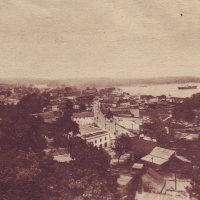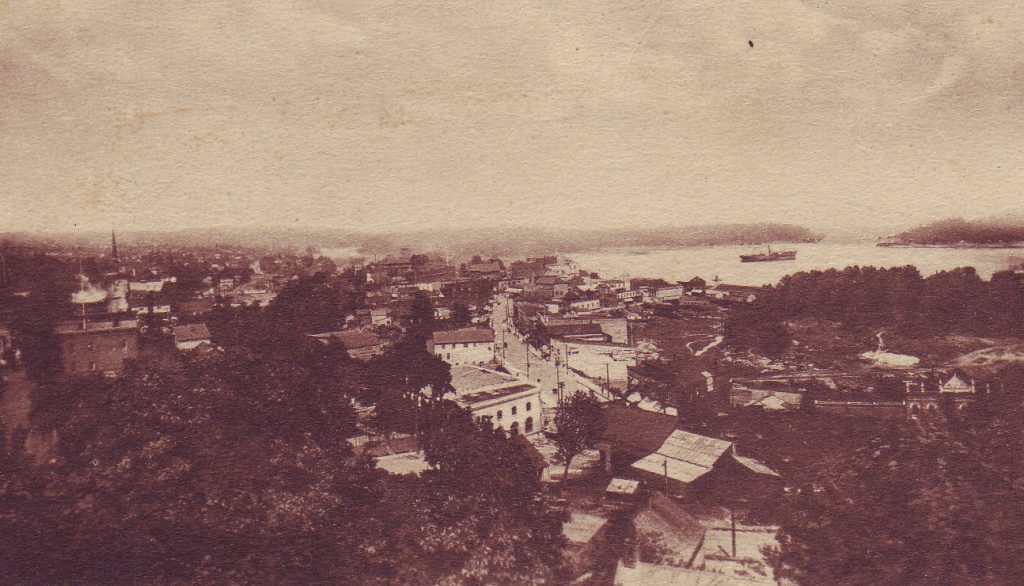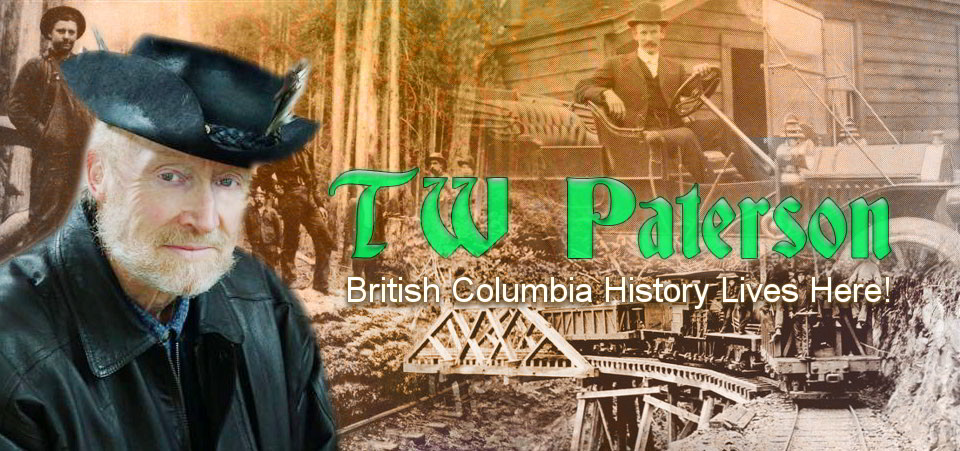Arts and Culture Came Hard to Nanaimo Pioneers

There was a time when arts and culture in Nanaimo were all but non-existent. Some early efforts to improve upon this sad status quo were doomed to, at best, minimal progress and, at worst, resounding failure.
Among those who really tried were the founders of the Mechanics’ Institute on Bastion Street. If you think this was a school for mechanics, by the way, you’d be wrong.
It was indeed a place of learning but in a totally different way. At the Institute you had free access to a library, could sit quietly and read or write a letter home, listen to a lecture or participate in spirited debates on religion, philosophy and politics. If there were any ‘mechanics’ there, they’d be doing the same.
Taking things a step further, members of the Mechanics’ Institute raised $40 to start a circulating library as early as 1859. The Nanaimo Public Library, forerunner to today’s Vancouver Island Regional Library, wasn’t even a twinkle in anyone’s eye at that time.

The Kensington Club, founded with 15 members, took a similar approach to arts and culture by encouraging readings and debating,’ mutual improvement,’ recreation and the pursuit of literary ‘tastes’ and studies.
Such was one aspect of arts and culture in Nanaimo a century and a half ago.
Compare to today when we have virtually unlimited selection of entertainment, electronic and otherwise. The world is literally at our fingertips. There was nothing like that in the past. In fact, one of the greatest social needs on the B.C. frontier–at a time when young single men, many of them far from their hometowns, made up much of the community–was the lack of healthful diversion and recreational facilities.
It’s no wonder that, as history has shown, the first business to set itself up in a new community was invariably a liquor vendor. No real wonder, either, why Nanaimo once had more saloons per capita than any other Island community. It’s because there was very little else for them to do.
Above or below ground, the men worked hard, often under dangerous conditions, and, without family commitments and positive alternatives, they played hard. What began as an evening of socializing over a beer and a cigar sometimes led to excess and unfortunate consequence.
As late as 1891, of a population of 4600, there were only 47 doctors, architects, teachers, lawyers and like professionals in all of Nanaimo.
It truly was a working man’s town. And when he wasn’t working–dance halls, which were considered by respectable folk to be fronts for prostitution, were legal and tacitly viewed, like real brothels, to be necessary evils.
Dance halls also were a source of revenue for the public coffers. A license cost an extortionate $200 for six months in 1881, whereas the fee for Chinese opium dens (with gambling the vice of choice of many Chinese bachelors who also had no real home as they weren’t allowed to have their families with them) was set at $25 per annum–$5 for smokers.
When Mayor Bate objected to the city’s condoning “such a pernicious drug as opium,” the more worldly J.P. Planta, who doubled as magistrate, thought it should be “taxed like any other stimulant”. Bate, obviously ahead of his time, countered that licensing opiates should be restricted to registered medical practitioners. (He was overruled.)
Public morality (or the lack thereof) was an issue that appalled and allied politicians and priests for decades.
It sparked temperance societies and women’s suffrage societies who originally marched not just for equal rights but against demon drink. Hence the efforts to give the men a place to read, to relax, to learn, like the Mechanics’ Institute. Women’s place was in the home, of course.
Later, Prohibition was the government’s prescribed antidote to alcohol abuse; not surprisingly, it was a failure.
Nanaimo were among their priorities. Religion was first and foremost, of course, beginning with the city’s first church services conducted by the Rev. Edward Cridge, Hudson’s Bay Co. chaplain from Fort Victoria. The Rev. Arthur Browning initiated Methodist services and the fur trading company donated land for what would become St. Paul’s Anglican Church. The Roman Catholics followed in 1864, the Presbyterians in 1866, and the Baptists brought up the rear in 1889. All promoted family values and agitated against immorality.
The Salvation Army took its war against vice to the streets–not always with the desired results. When a drunk crashed one of their public gatherings, a Salvationist grabbed him by the scruff of the neck and threw him down, and two others got into a fist fight. An attending newspaper reporter caustically observed, “The excitement was intense and the language indulged in was not such as would be considered polite, let alone in accordance with scripture.”
Then there were those citizens whose idea of arts and culture was the theatre (strictly ‘live’ before silent movies then the ‘talkies’). The so-called Opera House rarely lived up to its name, incidentally, there being few operas staged by travelling theatre troupes or local amateur drama and musical productions.
Almost any statutory holiday, most of them celebrating Queen/King and Empire but equally observant of American Independence, was excuse for public dinners and dances, particularly if you belonged to one of the scores of lodges around. And it paid to belong to a lodge. When few if any employers offered medical or death benefits, it usually was your lodge that helped you when you were ill and helped your family to bury you when you died.
Besides such lodges as the I.O.G.T., A.O.F., I.O.O.F., K. of P. and K. of L., there were long-established organizations such as the Native Sons of B.C., Imperial Daughters of the Empire, The Ladies of the Macabees of the World, the Woodsmen of the World, the YMCA, the Royal Templars of Temperance, the Nanaimo Caledonian Club and a host of others.
The scouting movement came to Canada in 1907 and the aftermath of the First World War prompted the founding of the Royal Canadian Legion and various other veterans’ groups to meet fraternal and other needs.
In more recent times we have community-active organizations such as the Rotary Club, the Lions, Kinsmen and Kiwanis.
Rather than arts and culture, young men could burn off their pent-up energy in a positive way with sports, and at sports they excelled, particularly on the inter-city level, the teams travelling to and fro by train. Port Place, then known as The Green, was the centre for much of this activity. There were stars of the cinder track, too, and cycling was the rage from the early ‘90s on.
Cricket–with seven acres of pitches, courtesy of mine manager Samuel Robins–and, later, baseball, were other favourites. Long before bathtub races, there were sailing, rowing and canoeing competitions, many of the latter giving Snuneymuxw athletes a chance to shine. There was rugby, soccer (the Nanaimo Thistles and the Nanaimo Rangers were provincial champs before the turn of the last century) and lacrosse.
Horse racing, with heavy betting on the side, was the favourite of many wealthier citizens, among them butcher and mayor, Edward Quennell. For a race track they had Haliburton Street with the Dew Drop Hotel for finishing line and judges’ stand. Boxing, professional and amateur, really was the manly art in those days, with travelling pugilists often being received in communities as if they were movie stars.
Some home-grown athletes achieved renown. The Swanson brothers and Charles Trawford were successful wrestlers and William Good was the world’s fastest sprinter in the 400-metre race at the San Francisco World Fair. But he wasn’t white so no medal.
For 67 years the landmark Civic Arena hosted sporting and community events–as many as 10 million participants and spectators.
Year round, there was always hunting and fishing and for the family, if you had one, there was Bowen Park, the beach and church socials.
Further in the way of the arts and culture in Nanaimo for those so gifted there was choral singing, in church and elsewhere, brass bands (with the cornet being a popular choice of instrument). We didn’t have a museum until Post No. 3 of the Native Sons of B.C. made a home for artifacts in the Bastion. Their small collection became the nucleus of today’s regional museum.
In short, arts and culture in Nanaimo, like so many other amenities and improvements in those pioneer days, came hard.

